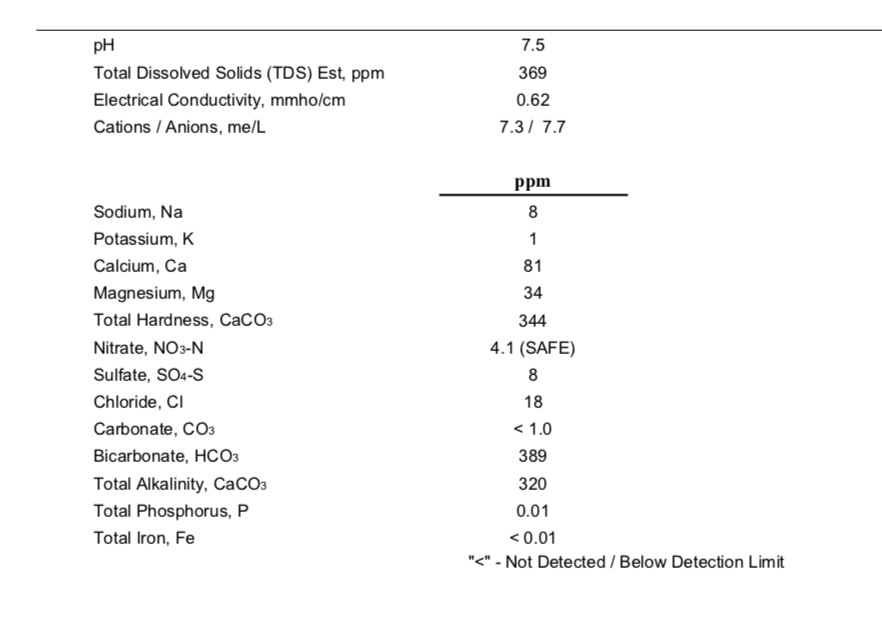Hmmm... I just found this PLETHORA of information posted by Martin about 5 years ago on another brewing forum:
The following information was taken from the water knowledge that I will be publishing with my water calculator shortly. The following presentation on what happens when water is treated by boiling should help brewers understand the process and results. Enjoy.
Decarbonation by Boiling is a practice that was employed historically and it does reduce alkalinity and calcium (hardness) in water with high Temporary Hardness. The boiling process drives off carbon dioxide (CO2) that helps keep chalk (CaCO3) soluble in water. When the CO2 is driven off, the CaCO3 will precipitate out of the water.
This process provides results that can be somewhat similar to performing Lime-Softening. In my opinion, lime-softening is a less energy intensive and less expensive way to reduce temporary hardness, but it may not reduce alkalinity to the degree that the boiling method can.
The water is heated to boiling or near-boiling and stirred, splashed, or aerated to help get the CO2 out of the water. As CO2 leaves the water, CaCO3 precipitates and causes the water to become cloudy. The heating is ended and the precipitate is allowed to settle quietly to the bottom of the vessel. The water is then immediately decanted off the sediment and used for brewing. The water cannot be allowed to sit too long on the sediment or CO2 will again diffuse from the atmosphere into the cooled water and redissolve the CaCO3.
This process does not reduce the magnesium content since Mg(OH)2 is much more soluble than CaCO3 in water and the CaCO3 precipitates first, leaving the magnesium with the bicarbonate remaining in the water.
Boiling reduces both bicarbonate and calcium content of the water when performed properly. The practical limit for the process reduces the bicarbonate content to between 60 and 80 ppm. Therefore, the quantity of CaCO3 that can be precipitated will be based on the difference between the starting and ending (60 to 80ppm) bicarbonate content. A reasonable assumption is to use the upper bicarbonate limit for the ending bicarbonate concentration since that allows for more error in the process. The ending calcium content for the water can be calulated using the following formula:
Ending Ca (ppm) = Starting Ca (ppm) - ((starting HCO3 (ppm) - ending HCO3 (ppm))/3.05)
The equation above assumes that the water has a high enough calcium concentration to execute the reaction to volatilize the CO2 and precipitate the CaCO3. An ending calcium concentration that is negative indicates that additional calcium would be required. If the calcium concentration is not high enough, it will be neccessary to add calcium in the form of Gypsum or Calcium Chloride to achieve the ending 80 ppm bicarbonate concentration. The decision as to which of these supplemental calcium sources to use should be based on the desire for more sulfate or more chloride in the water.
A technique to help encourage and speed the precipitation of CaCO3 from the boiled water is to add more Chalk to the water. The Chalk provides nucleation sites for the precipitating CaCO3 to agglomerate with and form larger flocs that will settle faster. A teaspoon of Chalk per 5 gallons should be sufficient to improve the settling. The added Chalk does not dissolve and add to the calcium concentration since it is not soluble in water without CO2.
Examples of the effect of Decarbonation by Boiling are presented in the water profiles below. The bicarbonate content was assumed to be reduced to 80 ppm and the calcium corresponding to the quantity of removed bicarbonate was also removed. All other ion concentrations remain as for the original water. In the case of the Burton and Dortmund profiles, the low original RA and significant reduction in RA with boiling, indicates that those profiles do not need to be treated in this way for brewing. Typically, water profiles such as Dublin, Edinburgh, London, Munich, and Vienna are suitable for boiling treatment.
Brewing Center Ca Mg Na SO4 Cl HCO3
Burton 213 40 25 610 35 80
Dortmund 179 15 40 330 130 80
Dublin 43 4 12 55 19 80
Edinburgh 33 20 55 140 50 80
London 42 6 15 40 38 80
Munich 6 17 4 18 8 80
Vienna 27 15 10 60 15 80
These profiles present the theoretical precipitation of calcium that will occur as the water is decarbonated by boiling. I'm not sure that I truely believe the really low Ca result for the Munich profile, but the chemistry indicates it is possible. The practical limit for calcium removal using lime softening is about 12 ppm (30 ppm hardness as CaCO3), so I remain skeptical that a 6 ppm Ca result could be attained.
Although the effect of boiling on Temporary Hardness is well documented and understood, the effect of minor water heating is less understood. Since the solubility of CO2 is inversely proportional to the water's temperature, it follows that minor heating will produce some of the effects of boiling. Bubbles can often been seen on the side of the kettle as the water heats. Therefore, a partial reduction in alkalinity and calcium content may occur when heating water with high Temporary Hardness to mashing or sparging temperature if the water is stirred and the bubbles are forced into the atmosphere. Since precipitation and decanting is not typically performed for mashing and sparge water preparation, the effectiveness of heating on the alkalinity and calcium reduction is probably limited. As already known for chalk, the precipitated CaCO3 in the water does not readily redissolve in the mash and therefore the heating may provide some minor alkalinity and calcium reduction.




